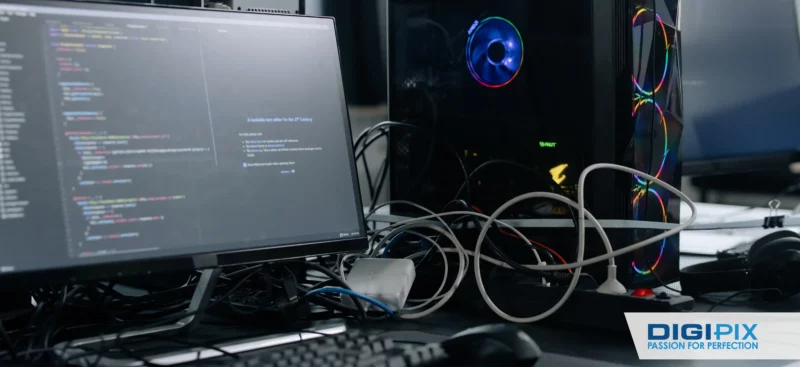Prompt Engineering vs Fine-Tuning: A Comprehensive Guide for 2025

As AI technology continues to evolve, understanding the differences between prompt engineering and fine-tuning becomes crucial for optimizing AI model performance. While both techniques aim to enhance AI outputs, they serve distinct purposes and require different approaches.
Core Differences
The fundamental distinction lies in how these techniques modify AI behavior. Prompt engineering focuses on crafting effective inputs, while fine-tuning involves adjusting the model's internal parameters.
Key Distinctions
- Prompt engineering requires minimal computing resources
- Fine-tuning demands substantial computational power
- Prompt engineering offers immediate flexibility
- Fine-tuning provides deeper specialization
Resource Requirements
Understanding the resource implications helps organizations choose the appropriate approach for their needs.
Prompt Engineering Resources
- Minimal technical infrastructure
- Human expertise in crafting prompts
- Quick implementation time
- Lower operational costs
Fine-Tuning Resources
- Significant computing power
- Specialized datasets
- Longer implementation periods
- Higher operational costs
Cost Comparison: Prompt Engineering vs Fine-Tuning
Understanding the cost implications of both approaches helps organizations make informed decisions about their AI implementation strategy.

A reflective computer screen displaying various IP addresses on it.
Prompt Engineering Costs
- API Usage: $0.002 to $0.12 per 1,000 tokens
- Development Time: Basic setup within days
- Infrastructure: Minimal technical requirements
- Maintenance: Primarily human expertise in prompt crafting
Fine-Tuning Costs
- Model Hosting: $7/hour for GPT-3.5-turbo on Azure
- Training Costs: $10-$100 for small datasets using cloud GPUs
- Development Time: 4-8 weeks for initial setup
- Data Preparation: $1,000 to $10,000 for dataset creation
Comparative Cost Examples
Small Project (Monthly)
- Prompt Engineering: $50-200 in API calls
- Fine-Tuning: $5,000+ for model hosting plus usage
Enterprise Scale (Monthly)
- Prompt Engineering: $500-2,000 in API calls
- Fine-Tuning: $10,000+, including hosting and maintenance
Accuracy and Performance
Each approach offers different advantages in terms of output quality and consistency.
Prompt Engineering Performance
- Flexible across various tasks
- Quick adjustments possible
- Limited by prompt quality
- Suitable for general applications
Fine-Tuning Performance
- Higher accuracy for specific tasks
- More consistent outputs
- Better domain expertise
- Improved specialized knowledge
Unlock the benefits of local SEO with DigiPix our proven strategies connect your business with nearby customers, increase foot traffic & drive qualified leads.
Improve your local search rankings, appear in Google Maps results & build credibility with campaigns designed to maximize your reach.
See measurable growth with enhanced visibility, more website visits from local customers & a strategy focused on dominating local searches.
Start Free Now
Implementation Strategy
Choosing the right approach depends on your specific needs and resources.
When to Use Prompt Engineering
- Quick solutions needed
- Limited resources available
- Flexible use cases required
- General applications
When to Use Fine-Tuning
- Specialized domain knowledge is required
- High accuracy needed
- Consistent outputs essential
- Resources available for training
Implementation Guidelines for Prompt Engineering vs Fine-Tuning
When implementing either approach, following specific guidelines ensures optimal results. Here's a detailed breakdown of the implementation steps for both methods:

Man typing on laptop with an AI chatbot through a holographic screen.
Prompt Engineering Implementation
Define Clear Goals
- Identify specific task requirements
- Set measurable success metrics
- Outline desired output format
- Establish quality benchmarks
Design Effective Prompts
- Place instructions at the beginning
- Use ### or """ to separate instructions from context
- Include specific examples when needed
- Maintain clear and concise language
Testing and Iteration
- Start with zero-shot prompting
- Progress to one-shot if needed
- Implement few-shot prompting for complex tasks
- Document successful prompt patterns
Fine-Tuning Implementation
Unlock the benefits of local SEO with DigiPix our proven strategies connect your business with nearby customers, increase foot traffic & drive qualified leads.
Improve your local search rankings, appear in Google Maps results & build credibility with campaigns designed to maximize your reach.
See measurable growth with enhanced visibility, more website visits from local customers & a strategy focused on dominating local searches.
Start Free Now
Prepare Your Model
- Choose appropriate pre-trained model
- Assess computational requirements
- Set up necessary infrastructure
- Verify hardware compatibility
Dataset Preparation
- Curate task-specific data
- Clean and validate datasets
- Ensure proper formatting
- Create training/validation splits
Training Process
- Set appropriate learning rates
- Define number of training epochs
- Monitor for overfitting
- Implement early stopping mechanisms
Future Developments
The landscape of AI optimization continues to evolve, with both techniques playing crucial roles.

A man and a robot thinking, with a business vision mind map highlighted behind them.
Emerging Trends
- Hybrid approaches combining both methods
- Advanced prompt optimization tools
- Automated fine-tuning processes
- Enhanced efficiency in both techniques
Stay ahead in AI innovation with DigiPix Inc.! Discover the key differences between prompt engineering and fine-tuning and learn how to leverage them for your business in 2025. Contact us today to unlock expert insights and elevate your AI strategy
Unlock the benefits of local SEO with DigiPix our proven strategies connect your business with nearby customers, increase foot traffic & drive qualified leads.
Improve your local search rankings, appear in Google Maps results & build credibility with campaigns designed to maximize your reach.
See measurable growth with enhanced visibility, more website visits from local customers & a strategy focused on dominating local searches.
Start Free Now
Frequently Asked Questions
What are the main differences in resource requirements between prompt engineering and fine-tuning?
Prompt engineering requires minimal computing resources and can be implemented immediately with basic technical infrastructure. In contrast, fine-tuning demands substantial computational power, specialized datasets, and longer implementation periods, often requiring significant investment in hardware and training time.
Which method provides better accuracy for specialized tasks?
Fine-tuning generally achieves higher accuracy for specialized tasks because it directly optimizes the model's parameters for specific domains. While prompt engineering can improve accuracy through better-crafted inputs, it's limited by the model's pre-existing knowledge and the quality of prompts.
How do implementation costs compare between prompt engineering and fine-tuning?
Prompt engineering typically involves lower operational costs, mainly requiring human expertise in crafting prompts and basic API usage fees. Fine-tuning can be significantly more expensive, involving costs for model hosting ($7/hour on average), dataset creation ($1,000-$10,000), and ongoing maintenance.
When should a business choose prompt engineering over fine-tuning?
Businesses should opt for prompt engineering when they need quick solutions, have limited resources, require flexibility across various tasks, or deal with general applications. Fine-tuning is more appropriate when specialized domain knowledge, high accuracy, and consistent outputs are essential and when adequate resources are available for training.
Conclusion
While prompt engineering offers flexibility and cost-effectiveness for general applications, fine-tuning provides superior accuracy for specialized tasks. The choice between these approaches depends on specific needs, resources, and desired outcomes.
As AI technology advances, organizations may benefit from implementing both techniques strategically to maximize their AI capabilities.
Request A Quote
Written By: Khurram Qureshi
Founder & consultant of DigiPix Inc.
Call or text: 416-900-5825
Email: info@digipixinc.com
About The Author
In 2005, Khurram Qureshi started DigiPix Inc. which started off as a design agency offering video editing to professional photography, video production & post production, website designs and 3D Animations and has now expanded towards online marketing and business consultancy. Khurram Qureshi also is a motivational figure and participates in local and international platforms. He also play a role in the local community development, helping local young minds get ready to enter the job market.



